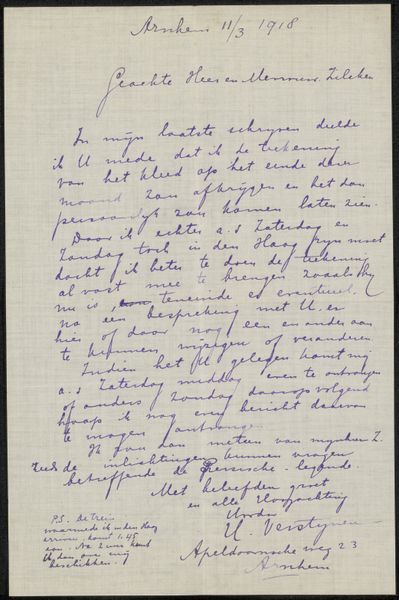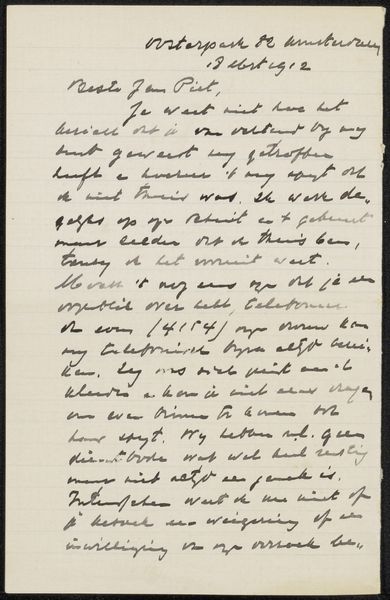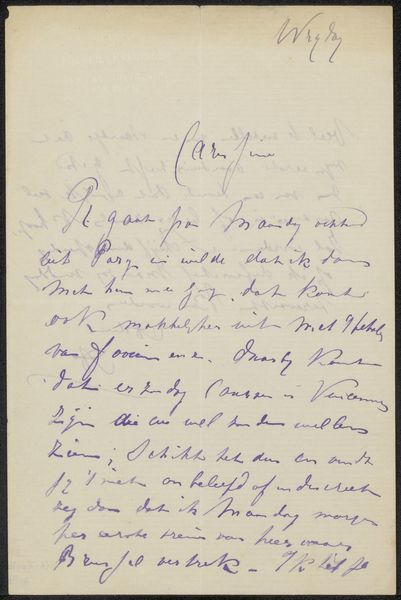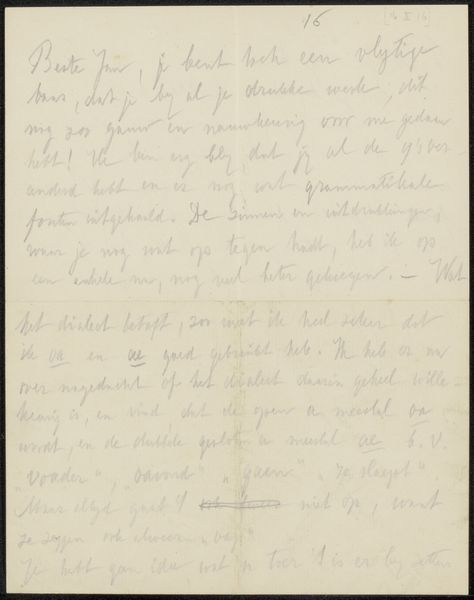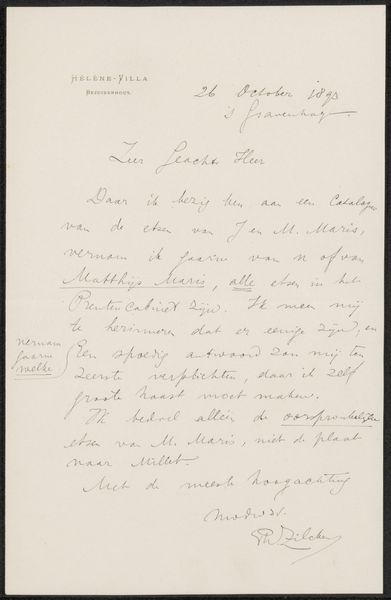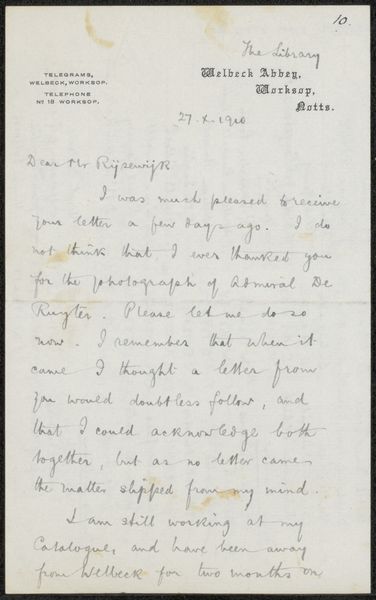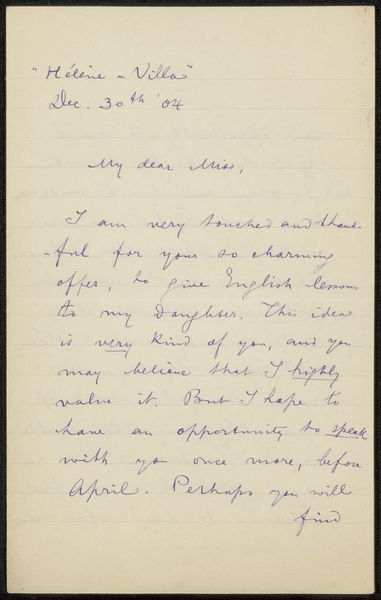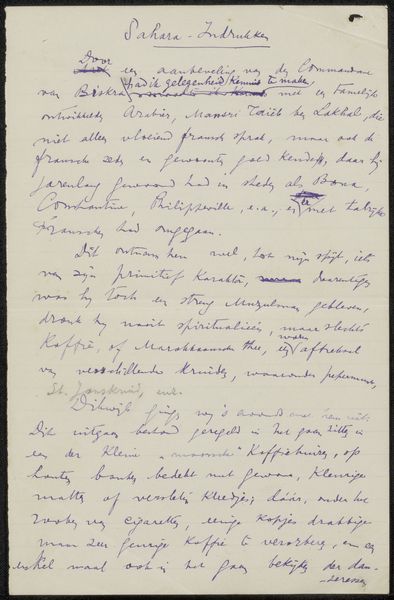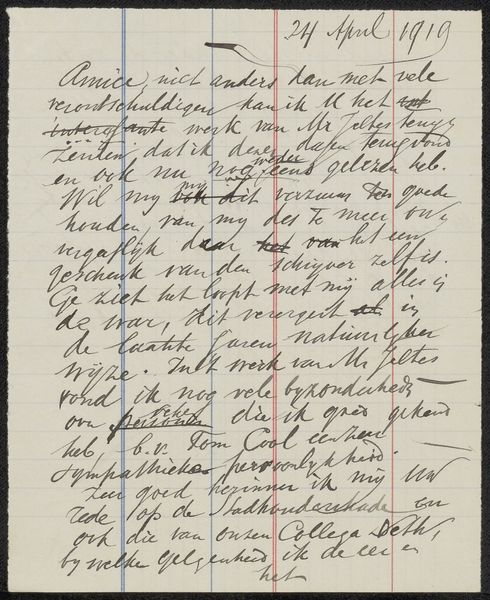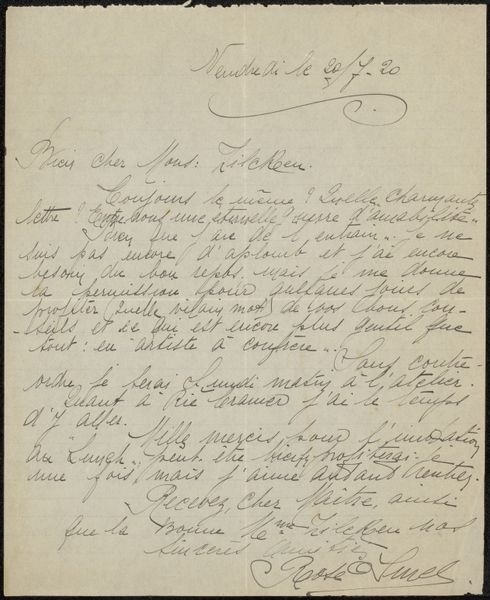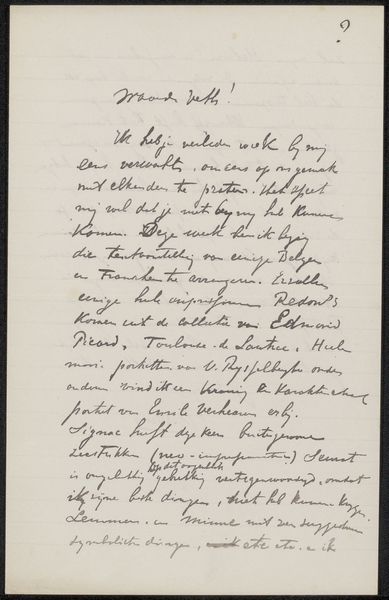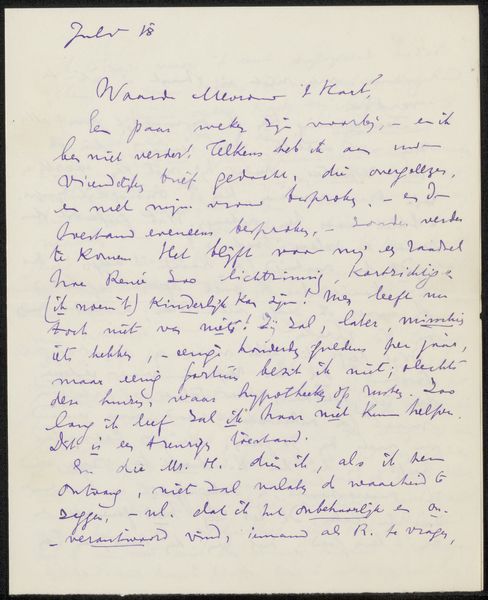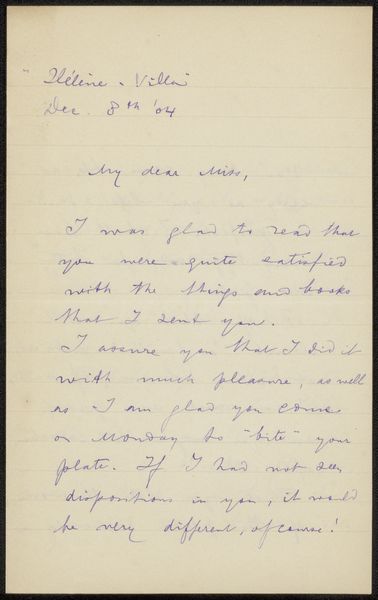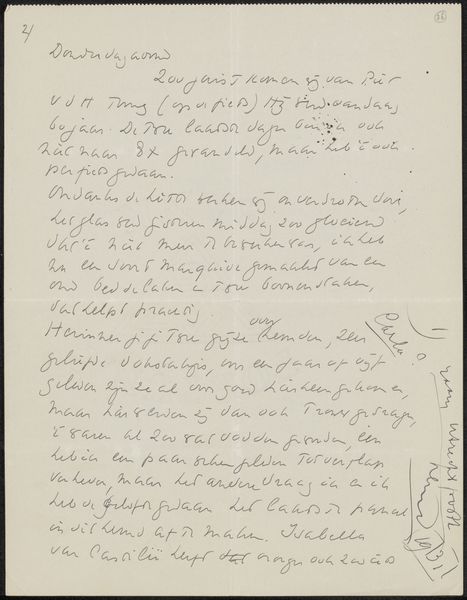
drawing, paper, ink, pen
#
portrait
#
drawing
#
hand written
#
hand-lettering
#
hand drawn type
#
hand lettering
#
paper
#
personal sketchbook
#
ink
#
hand-drawn typeface
#
pen work
#
sketchbook drawing
#
pen
#
sketchbook art
#
small lettering
Copyright: Rijks Museum: Open Domain
Editor: We're looking at "Brief aan Elsie Maud Cownie" by Philip Zilcken, dating from around 1905 to 1924. It's ink on paper and housed at the Rijksmuseum. It's a handwritten letter, almost like a sketch in itself. The cursive and the density of the writing make it a bit difficult to decipher, but I’m struck by how the words themselves form a texture on the page. What do you see in this piece? Curator: What arrests me is the tension between the personal and the formal aspects of this letter. Zilcken’s medium—pen and ink on paper—lends itself to both intimate expression and deliberate artistry. Examine how the varying pressure of the pen creates a dynamic visual rhythm, with bolder strokes punctuating the delicate flow of the cursive. The composition itself, with its densely packed lines, disregards conventional spacing, resulting in a unified field of text. How might this inform the reading experience? Editor: That's a really interesting point. It feels like the content of the letter is less important than the visual presentation of the text. Is it intended to be read, or just observed? Curator: Indeed, the legibility is secondary to the visual impact. Consider the formal elements—the balance between the light and dark areas, the contrasting weight of the lines, and the overall texture created by the accumulation of script. These elements elevate the letter beyond its function as mere communication and approach the realm of visual art. Notice the phrases which appear highlighted through bolder pen strokes. What visual impact do they suggest for you? Editor: The bolded phrases jump out as having more meaning. I’m beginning to see it as an artwork using language as its medium. Curator: Precisely! The physicality of the handwriting and the visual construction of the text offer a unique aesthetic experience independent of its linguistic content, thus prompting us to view a simple letter as a formal portrait. Editor: I never would have thought of a letter in those terms. This has definitely opened my eyes to new ways of analyzing written art!
Comments
No comments
Be the first to comment and join the conversation on the ultimate creative platform.
